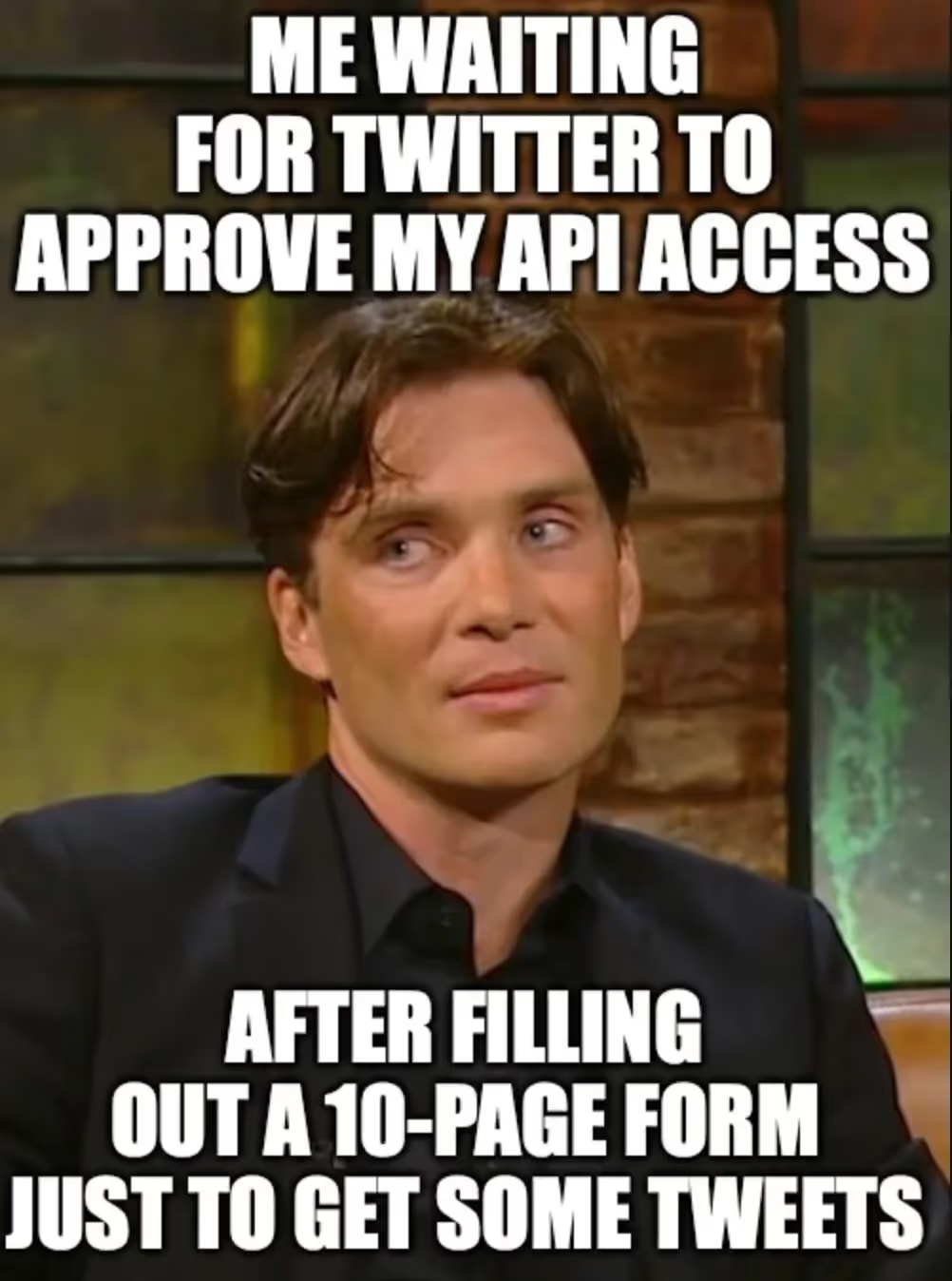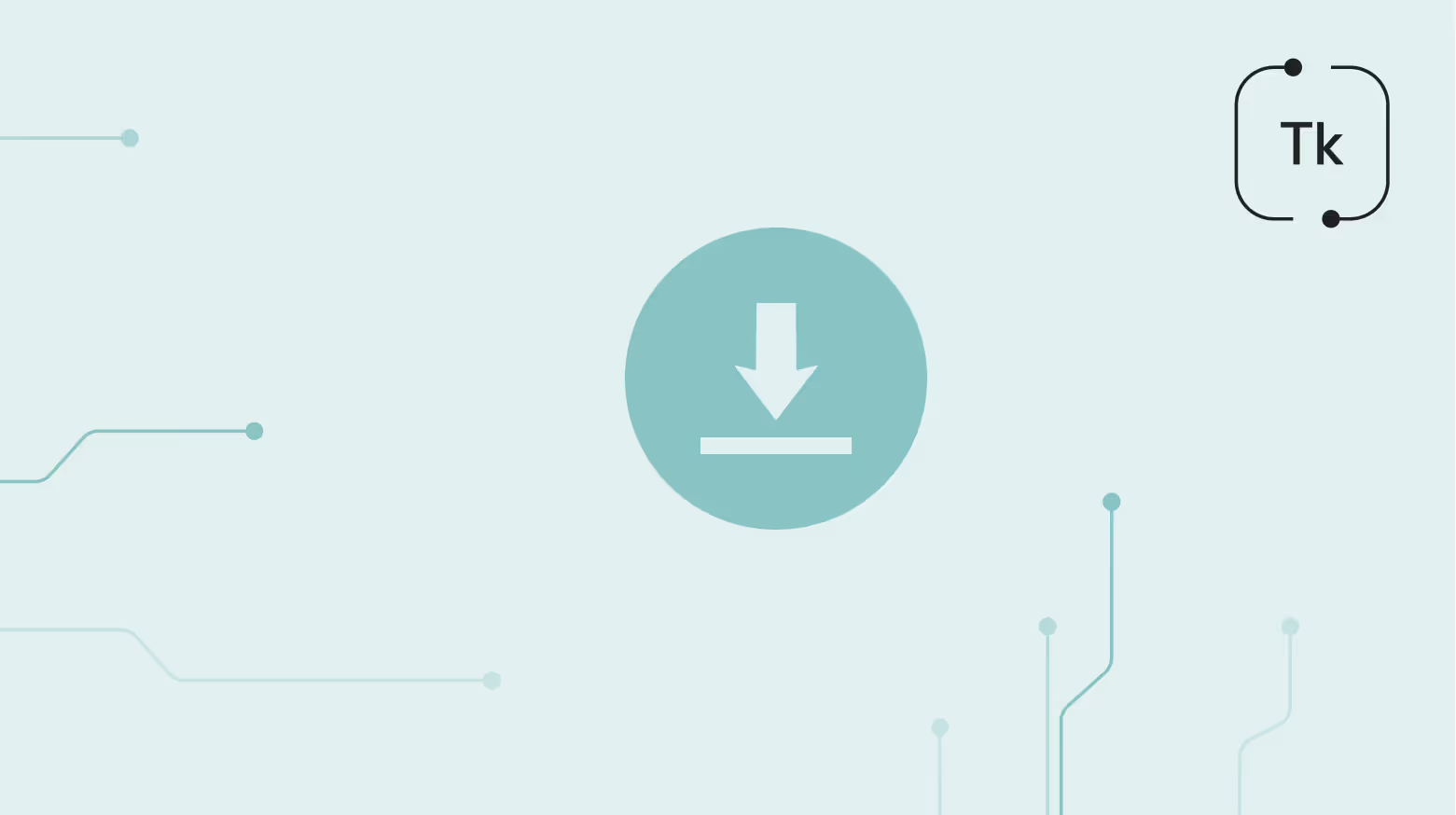
Every second, thousands of people are spilling their tea on X (formerly known as Twitter). If you want to capture that chaos for analysis, marketing intel, or research, you need a Twitter API key, which is Twitter's way of saying “sure, access our data, but first…”
Overview:
- Twitter layers API access across multiple plans (Free, Basic, Pro, Enterprise), with each tier offering different throughput caps, feature access, and costs that frequently exceed expectations.
- Getting started means applying for developer credentials, figuring out OAuth authentication, and knowing which endpoints won't leave you empty-handed.
- Planning to scrape thousands of tweets or track brand mentions around the clock? The budget-friendly tiers will tap out faster than your phone battery at a music festival.
But don’t lose hope beforehand. Today, we’re talking about the crucial point of the Twitter API – the Twitter API key and Twitter access token. You will find out what it is for and compare the process of getting the Twitter API keys from the official Twitter and alternative solutions.
What Is the X (Twitter) API?
At its heart, the X API (formerly Twitter API) is a collection of digital doors leading to X's enormous archive of public information. It's what lets developers fetch tweets, post updates, follow trends, or study conversations.
Rather than scraping web pages like you're digging through a dumpster, the API hands you organized access on a silver platter. Kind of like asking the librarian to grab exactly what you need instead of crawling around the stacks like a maniac yourself.
As of 2025, X counts around 350 million monthly active users worldwide, and much of its public data can be accessed through this API – within the limits of your plan and permissions, of course.
How the API Key Fits In
Every app that talks to X must prove who it is. That's where API keys come in.
Imagine you're entering a building with several locked rooms. The API key is your ID badge that says, “I'm allowed to be here.” It identifies your app.
Along with it, you'll receive:
- API Secret Key (Consumer Secret) – works as your app's private password.
- Access Token and Access Token Secret – needed when your app performs actions on behalf of a user, such as posting tweets or reading private messages.
These four strings of code form the digital signature that keeps everything secure. Depending on the type of access you're using, they're passed inside HTTP headers, not visible in URLs – a bit like sending your ID through a secure channel rather than flashing it in public.
API Key vs. Access Token: Same Team, Different Roles
It's easy to mix these up, but they're not the same thing.
In short: API keys identify the app; access tokens represent the user. Both work hand in hand, like a key and a fingerprint scanner.
How to Apply for an X (Twitter) API Key
Getting your hands on API access now isn't the breezy process it used to be back in the day. X cooked up a tiered system that separates the penny-pinchers from the big spenders, with free and paid tracks. Here's the play-by-play:
- Jump into the X Developer Portal, sign in with your X credentials, and submit your developer application.
- Then build out a Project and an App inside your dashboard.
- Generate your API key, secret key, and – if needed – access tokens.
- Copy and store them safely. If you lose them, you'll have to regenerate new ones, which disables the old set.

X splits things up into several pricing buckets – Free, Basic, Pro, and Enterprise. Each one comes with its own speed limits and the parts of the API you can actually touch. The Free tier is basically a sandbox for kicking tires, while Pro and Enterprise open the floodgates for serious volume and fancy features. So if you're planning to hoover up thousands of tweets or watch brand chatter in real-time, you'll need to pony up for the bigger packages.
If you want to have more time for collecting data and analyzing it, try Data365 Social Media API. Contact us and that will be enough to start the machine.
Authentication: How Apps “Talk” to X
X's authentication methods depend on what you're trying to do.
- OAuth 2.0 Bearer Tokens: best for read-only requests, like analyzing public tweets.
- OAuth 1.0a: required when your app performs user actions – for example, posting on someone's behalf.
Think of OAuth as a translator that makes sure both sides – your app and X – speak the same secure language. You'll include your credentials in the request header each time your app connects.
Twitter API Rate Limits and Access Rules
X slaps rate limits on everything – basically speed bumps, controlling how many requests you can fire off in a given window. What those limits look like depends on a few things:
- Plan you're on (Free, Basic, Pro, Enterprise).
- Which endpoint you're hitting.
- Whether you're running OAuth 1.0a or OAuth 2.0.
Forget that old “1 request per 15 minutes” folklore – that's ancient history. Your actual limits live in your developer dashboard, where you can eyeball them for each endpoint.
Alternative Ways to Collect Twitter Data
Getting Twitter API keys from X and getting keys/tokens with alternative tools can differ. So, let's take the Data365 API as an example. To get started with the service, you need to visit the contact page, submit a request, and provide a valid email address so that the support team can discuss your business needs. After that, you will get your API key and the necessary information to start using the API. Yes, that’s easy. Yes, no OAuth drama.
Here are some other benefits that come right after the Twitter API key:
- Historical Data That Doesn't Stop at Yesterday
Data365 opens up the archives while simultaneously grabbing fresh tweets in real-time. Researching how narratives evolved during a crisis? Comparing current trends with past patterns? You can actually access what you need.
- Setup That Won't Destroy Your Afternoon
Data365 provides Postman collections and clear documentation that gets you from zero to collecting data without wanting to throw away your laptop. Test queries, see what comes back, adjust, and move on.
- Platform Coverage That Matches Reality
Online conversations don't live in walled gardens. What starts on X (formerly known as Twitter) spreads to Reddit, jumps to TikTok, gets discussed on Facebook, etc. Data365 connects you to multiple platforms so you're tracking the full story instead of one chapter. Multi-source monitoring beats single-platform blindness when you're trying to understand what's really happening.
- Support That Solves Problems Instead of Pointing at Docs
Data365 puts actual support behind our product – people who can troubleshoot your setup, accommodate custom needs, or walk you through what went wrong. So, now if something breaks, you're not hunting through forums and GitHub issues, hoping someone documented your exact problem.
Plus, a 14-day trial period lets you verify everything works before opening your wallet.
- Adapts to Your Use Case Instead of Forcing Conformity
Academic research tracking disinformation? Startup monitoring customer feedback? Corporate team managing brand reputation? Security operation watching for threats? Data365's API flexes to fit different needs instead of demanding you rebuild your project around its constraints. Same infrastructure, different applications, no reinventing wheels.
Ready to give it a try? Simply contact us. No juggling flaming torches, we promise.
Not X API But Data365 Successful Use Cases: From Idea to Execution
Using an actual API is like having a professional kitchen instead of just a microwave: reading tweets is your basic function (like boiling water), but there's a whole counter full of appliances and gadgets available once you figure out what dish you're cooking. Here are several scenarios borrowed from how teams deploy the Data365 Social Media API – compared with how X's API handles similar missions – to fire up your imagination and demonstrate what's realistically achievable.
1. Media Monitoring & Sentiment Analysis
Neticle, a media monitoring outfit specializing in text analysis, needed massive amounts of social media data to feed into its sentiment analysis engine that works with near-human accuracy. Data365's API populated their system with posts – everything from post content and hashtags to reaction counts and comment threads.
Neticle's Text Analysis API then chewed through this data to extract sentiment scores, detect topics and brands, recognize emotions, and spot locations in multiple languages. The partnership let Neticle turn raw social chatter into actionable intelligence with real-time analysis and clean dashboards that actually made sense.
2. Threat Intelligence & Cybersecurity Monitoring
Several cybersecurity teams integrated Data365's API to monitor social media for real threats while protecting high-value targets like hospitals, banks, and critical infrastructure. They set up surveillance for dangerous keywords, tracked disinformation networks spreading lies, watched for violence planning, and caught cyberattack coordination happening in plain sight.
The system filtered massive amounts of social chatter down to actual signals worth acting on, letting them spot threats before they exploded. This transformed their approach from constantly reacting to disasters to actually preventing them.
3. Combating Manipulation, Fake Engagement & Bot Networks
A data science company (partnering with NATO StratCom, where getting things wrong isn't an option) used Data365's API to tackle the fake account and bot problem plaguing social platforms. They retrieve public data to expose underground markets selling phony engagement, finding price differences they could exploit to mess with these operations, and even tracking how surface-web scam services connected to dark web activity.
After analyzing 315,000+ profiles, they caught bot networks spreading misinformation through telltale patterns like robotic posting frequency and copy-paste content. Data365's API handed them the ammunition to actually fight back against digital manipulation instead of just documenting the problem.
The Last Word on Twitter API Keys: From Setup to Success
Hopefully, this article has clarified how to get the Twitter API key. Obtaining a Twitter consumer key or Twitter access token is straightforward, but choosing the right API version, tariff plan, and understanding usage limits is crucial.
Today, various options are available. If looking for an alternative tool to fetch public data from social media, Data365 could be a suitable choice. We provide reliable support throughout the entire period of our API use. Contact us for further details to help you make the best decision.
Extract data from five social media networks with Data365 API
Request a free 14-day trial and get 20+ data types








.svg)
.svg)
.svg)






.svg)
.svg)
.svg)
